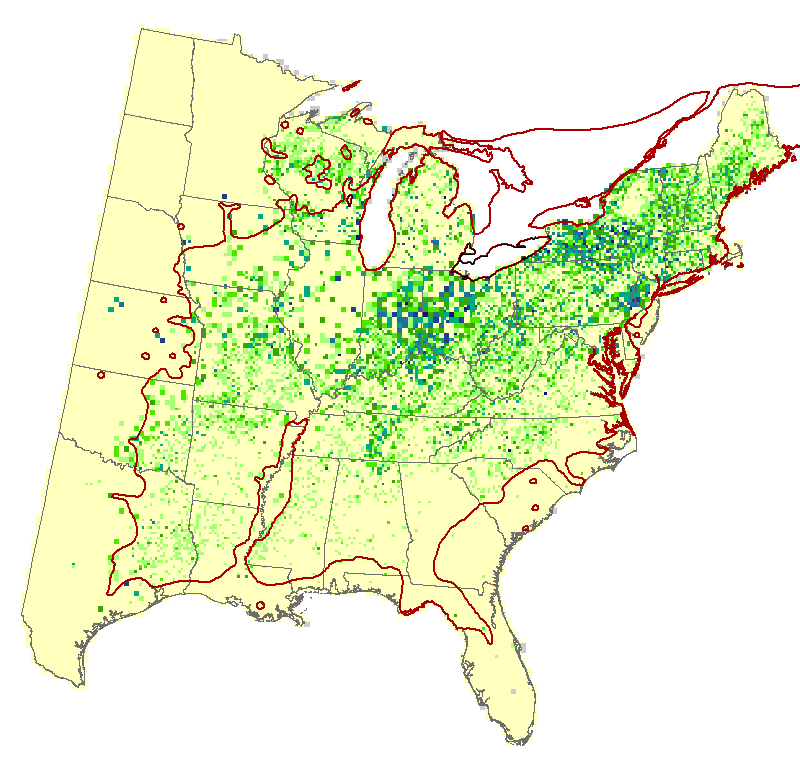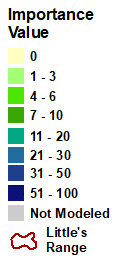white ash (Fraxinus americana)
Model Reliability: Medium
| GCM SCENARIO | % Area Occ | Ave IV | Sum IV | Future/Current IV |
|---|---|---|---|---|
| Actual | 25.3 | 5.8 | 42998 | N/A |
| RFimp | 34 | 3.7 | 36466 | 0.85 |
| CCSM45 | 50.4 | 3.3 | 48160 | 1.32 |
| CCSM85 | 58 | 3.2 | 54783 | 1.5 |
| GFDL45 | 57.6 | 3.3 | 56142 | 1.54 |
| GFDL85 | 62.8 | 3.3 | 60154 | 1.65 |
| HAD45 | 58.7 | 3.2 | 55302 | 1.52 |
| HAD85 | 62.9 | 3.1 | 56611 | 1.55 |
| GCM45 | 60.1 | 3 | 53225 | 1.46 |
| GCM85 | 64.8 | 3 | 57206 | 1.57 |
Regional Summary Tree Tables
Summaries for tree species are available for a variety of geographies, in both PDF and Excel format. These summaries are based on Version 4 of the Climate Change Tree Atlas
Interpretation Guide
White ash is currently widely distributed (22.9% of area, currently seventh highest), dense, low IV, and abundant across much of the eastern US but the emerald ash borer is working its way through its habitat, killing huge numbers of ash trees. Even though the models suggest a small increase in suitable habitat by 2100, EAB and the various battles to contain its destruction are currently dictating future possibilities for this species. SHIFT reports that this is a good infill species with minor migration north.
Family: Oleaceae
Guild: opportunistic, fast-growing understory tolerant
Functional Lifeform: large deciduous tree
| 2.7 | -2.01 |
| -0.54 |  |
MODFACs
What traits will impact white ash's ability to adapt to climate change, and in what way?:
Primary Positive Traits
Primary Negative Traits
Insect pests Fire topkill Shade tolerance



